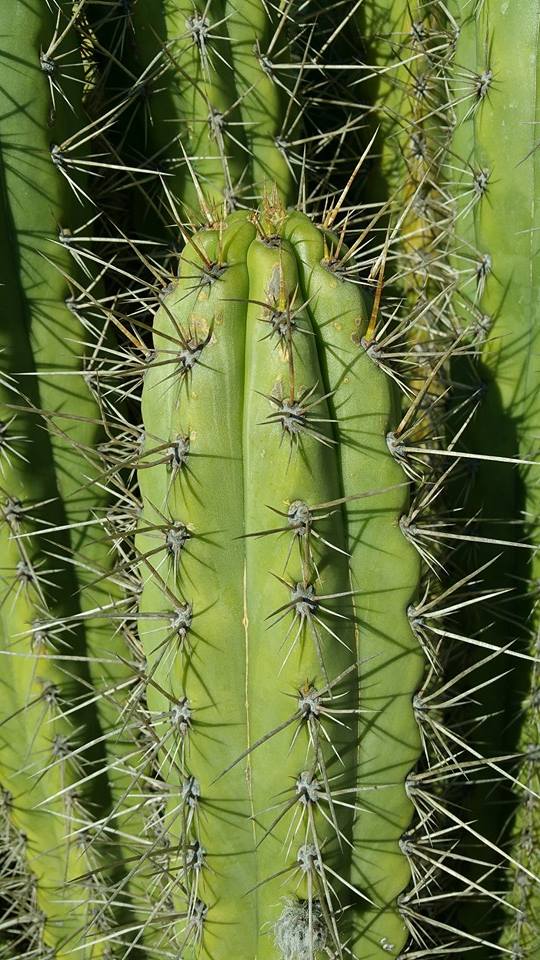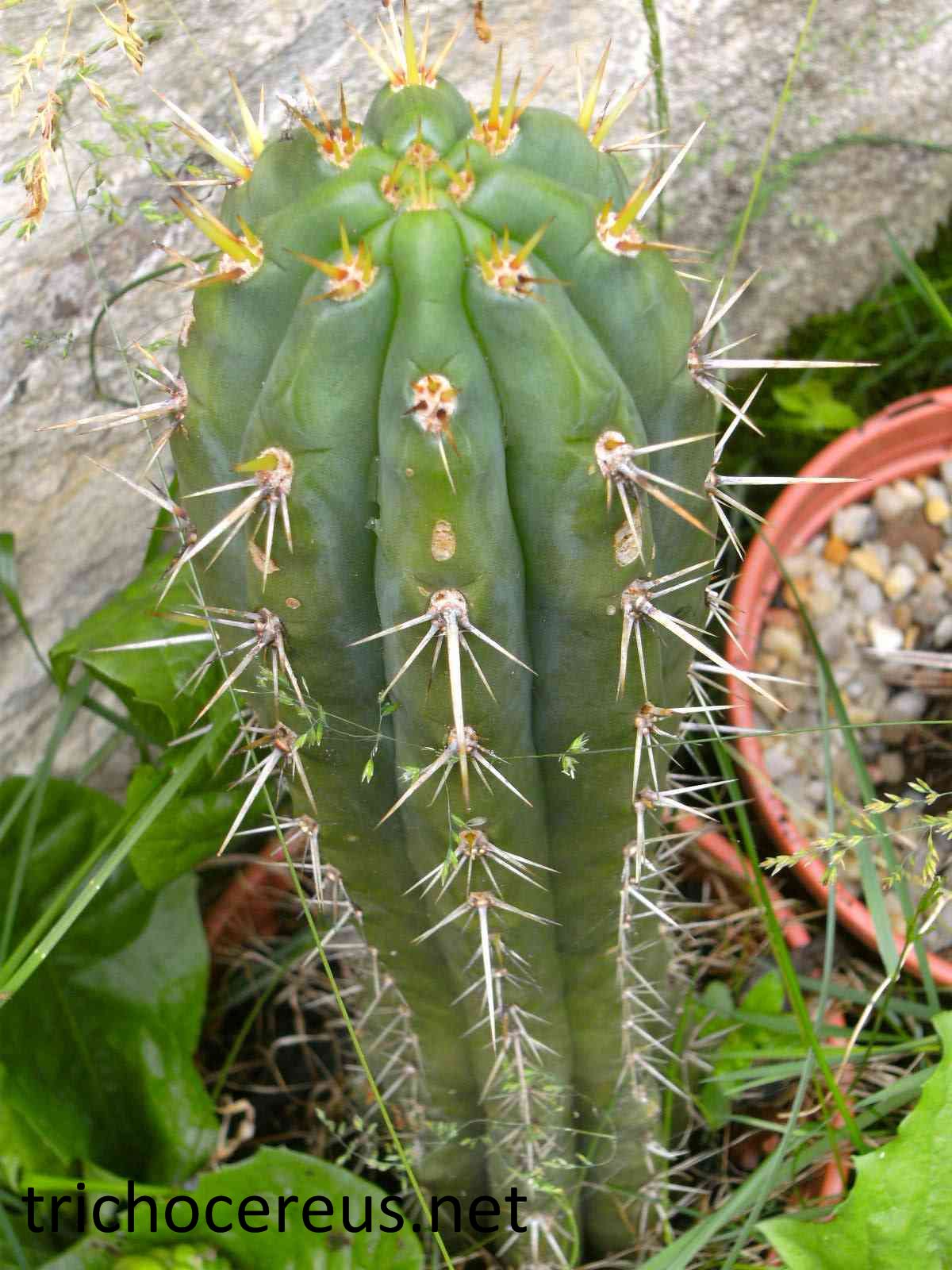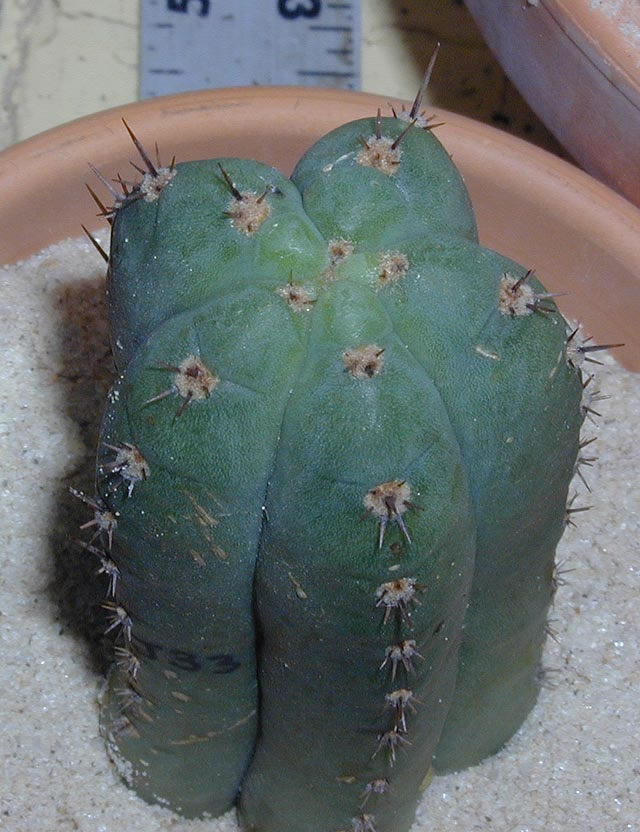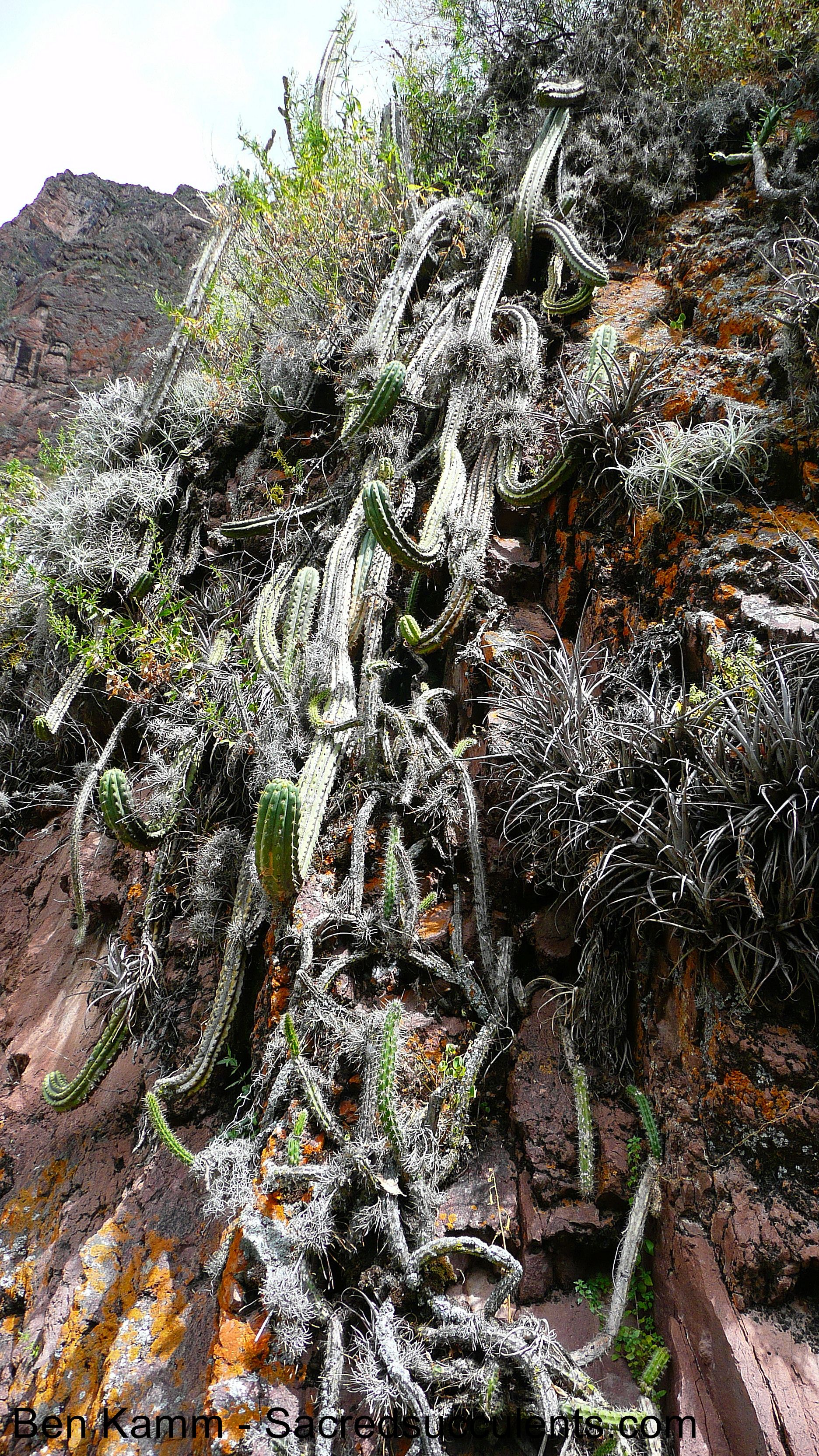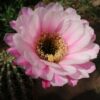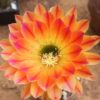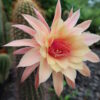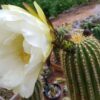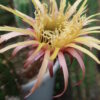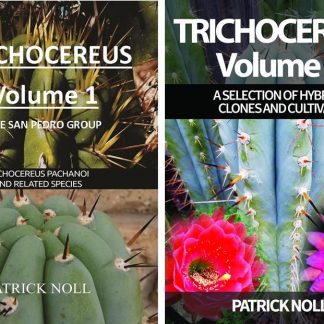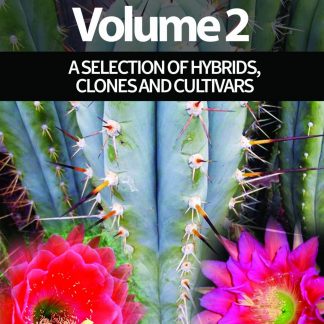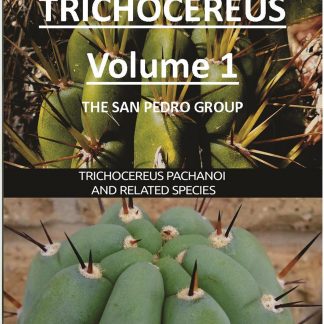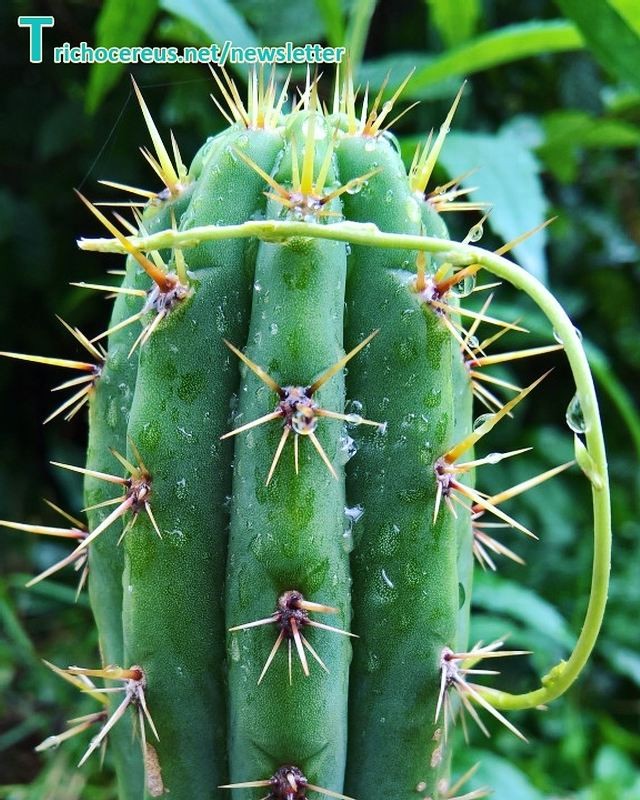
Trichocereus cuzcoensis is a Trichocereus species from Cusco in Peru. It is described as a species that is limited to Cusco and only plants from that area count as Trichocereus cuzcoensis in the sense of the description. Many people on forums and Facebook groups identify close relatives of Trichocereus cuzcoensis from other parts of Peru as Trichocereus cuzcoensis, which is absolutely false. Such species are Trichocereus knuthianus, Trichocereus schoenii, Trichocereus tarmaensis, Trichocereus uyupampensis, Trichocereus tulhuayacensis, Trichocereus chalaensis, the spiny forms from Chavin etc. There are probably more, but those are the ones that I see misidentified the most. Trichocereus cuzcoensis is probably the most misidentified species in this genus, simply because people just love to identify things as Trichocereus cuzcoensis. If in doubt, always bring in a specialist that actually knows how similar some of the species mentioned before can be sometimes.
The current name of Trichocereus cuzcoensis still is Echinopsis cuzcoensis, but many good authors have abandoned this sinking ship and went back to use the Trichocereus names. Check out Joel Lodé´s book TAXONOMY OF THE CACTACEAE. Trichocereus cuzcoensis, also known as Echinopsis cuzcoensis, is considered a correct and valid species, despite it´s obvious similarity to many forms of Trichocereus peruvianus. There are countless intermediates between Trichocereus peruvianus and Trichocereus cuzcoensis (especially at sites where both grow together) and there are many regional forms that show traits of both species. As an example, there are Peruvianoid forms of Trichocereus cuzcoensis with a higher rib count than the standard version, but without swollen spine bases and and there are specimens of Trichocereus peruvianus that show some traits of Trichocereus cuzcoensis. For example, even the Icaro DNA peruvianus have swollen spine bases, but no one in their right mind would treat them as Trichocereus cuzcoensis. Personally, I think that Trichocereus cuzcoensis and Trichocereus peruvianus are so similar that they are at least subspecies or varieties of the same species. We´ve already seen lots of different regional forms of Trichocereus cuzcoensis. Everywhere T.cuzcoensis grows in direct neighborhood of Trichocereus peruvianus, they hybridize with each other and form transitional forms. The whole group around Trichocereus peruvianus is extremely variable and that also includes Trichocereus cuzcoensis as well. Please note that Trichocereus cuzcoensis is MORE than just Karel Knize´s KK242, which has become THE textbook definition of a cuzco. The hate around KK242 is responsible for giving the species a bad rep and that´s absolutely not justified as far as we are concerned. It´s a beautiful and unique species and large mother plants are usually stunning.
Because there are countless forms of Trichocereus cuzcoensis or its close relatives, we started collecting as many photos as we can to put them here together.
Description of T. cuzcoensis:
Echinopsis Cuzcoensis is a columnar cactus that grows columnar and is pupping from the base. It can get more than five meters tall, though most collection plants that are grown in pots do not exceed 2 meters. However, in countries like Australia, there are many huge plants of Trichocereus cuzcoensis to be found. New growth has a bright green color. It can get between 7 -9 rounded Ribs and the areoles are approximately 1-2 centimeters apart from each other. Trichocereus cuzcoensis has many, very strong spines. The number of spines is very variable but in most cases, I observed between 8-12 spines. The spines usually have a rounded, knobby base. New spine growth is yellow or dark brown while old spine growth is usually dark gray to white with slight black undertones or black spine tips. The spines usually are between 5-10 centimeters long. If you have a suspected E.cuzcoensis with a low rib count, it is likely not a Cuzco but a close relative such as the plants from San Marcos, T. schoenii, T. santaensis, etc.
Trichocereus cuzcoensis is a night-flowering species but the flowers usually stay fresh until the morning of the next day. It is self-sterile and you need another specimen as pollen donor in order to produce seed.
Flower:
The flower color is white and the flower is usually very large. It measures up to 16 centimeters, the tube is green and 7-8 centimeters long. Petals are approximately 5 centimeters long and there are hairs covering the flower.
Type locality:
Peru, Cuzco. Cuzcoensis relatives from other areas do not count as T.cuzcoensis is the sense of the description.
Synonyms, commercial names & Varieties:
Trichocereus knuthianus, Trichocereus crassiarboreus, Cereus cuzcoensis, KK242, KK340, KK1911 Knuthianus, Trichocereus tarmaensis. Please note that some of these are close relatives that we count in the winder context of this species.
Cultivation:
Trichocereus Cuzcoensis is grown just like other Trichocereus species. It´s a very tough and frost hardy species and is able to cope with temperatures down to -9° celsius/15.8° Fahrenheit for short periods of time. The minimum average temperature is 10° celsius/50° fahrenheit. That temperature is also the minimum temperature that it needs to stay healthy during the winter.
Winter protection:
Trichocereus cuzcoensis can be overwintered in a bright and well ventilated place. The temperature should be around 9-10° Celsius and the plants need to be completely dry. In european countries, the growers stop giving water and fertilizer in late summer (September or October) and take em in until early May or April. Keeping the plants dry and cold over winter also helps to increase flower production. Plants that are kept in a warm room over the winter lose their ability to flower. Besides, plants or seedlings need to be watered on a regular basis as soon as you have them in a heated room. If you want to overwinter a Trichocereus in a warm room (20°-30° Celsius), you have to water it on a regular basis. You can only overwinter a plant “dry” if the temperatures are low.
Growing Trichocereus cuzcoensis from seed: Trichocereus cuzcoensis is very easy from seed, because it is relatively resistant to most pests. One of the biggest challenges is to get good quality seed because most cuzcoensis seed on the market is pretty old and some do not even germinate. I am constantly looking for interesting new types of Trichocereus cuzcoensis, because they are amazing plants. Take a look at the pics from the Sacred Succulents Field Trips that are labeled “Cuzcoensis” and you will most likely agree. Germination temperature for Trichocereus cuzcoensis is between 26° and 30° celsius. It only needs very little water to induce germinations and if you have quality seed, they will germinate within 2-6 weeks. If nothing shows up by the 6th week, you will probably not get germinations at all. In this case, remove the lid, let the soil dry out and start with the germination process again. Those cycles mimic the way this actually happens in nature and sometimes, you will be able to re-activate dead seed. You can also add GA-3, which is Gibberelic Acid or use a strong HPS or LED lamp to wake the seeds up, because ultraviolet light increases germination rates. In general, Trichocereus seeds need light to germinate, so do not cover them with soil.
Trichocereus cuzcoensis Seed Sources: I have some great seeds in my shop right now. The first one comes from Huancavelica in Peru and the other one is somewhere between Trichocereus peruvianus and Trichocereus cuzcoensis.
This looks like a very typical Trichocereus cuzcoensis KK242. This strain was originally brought into cultivation by Karel Knize. He also sold various types of similar plants labeled as Trichocereus cuzcoensis, Trichocereus macrogonus or Trichocereus peruvianus. The label KK242 does not refer to a particular plant but the area where the seeds/cuttings were collected at. Because of that, there are many plants labeled KK242 which are NOT a Trichocereus cuzcoensis. The type just looks so unique and remarkable that it stuck and most plants that look like this are usually identified as KK242. Which is not really correct because that´s just one of the many types that grow within the KK242 range. However, most of the KK242 are in fact Trichocereus cuzcoensis. Pic: Master Evan
Another KK242
Below: A form of KK242 that is not a Trichocereus cuzcoensis.
One of the many faces of KK242. Copyright K.Trout
Copyright: Ben Kamm, Sacred Succulents
Also check out this posting with many cool Cuzcos fom the Sacredsucculents Field Trips!
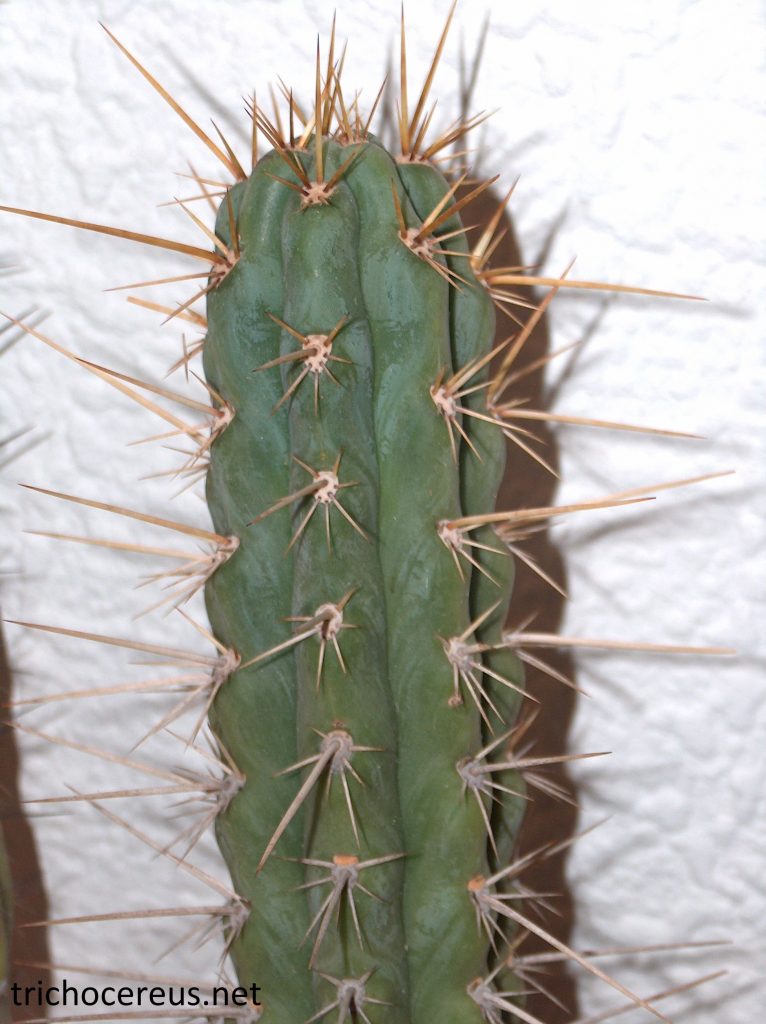
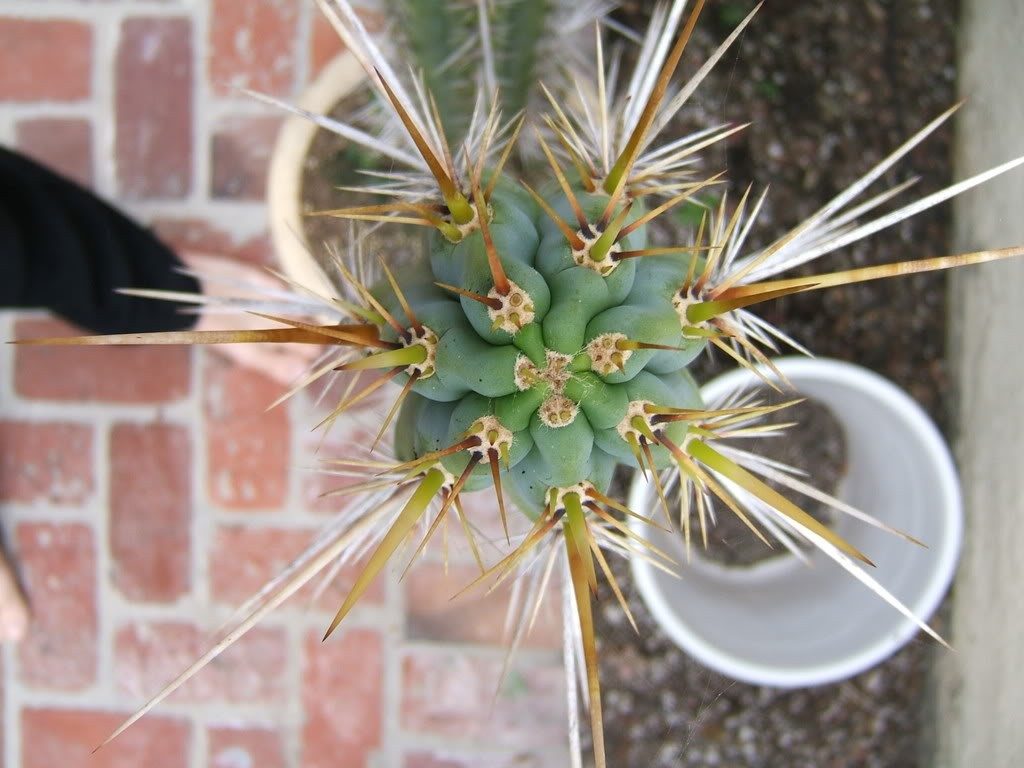
 Delia Kisar
Delia Kisar 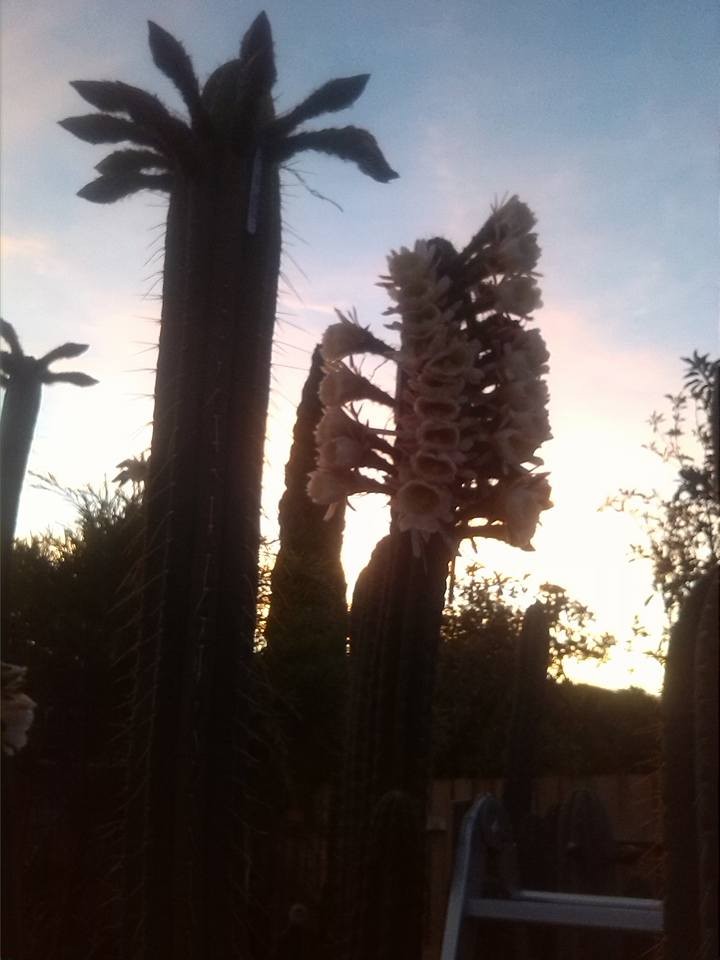
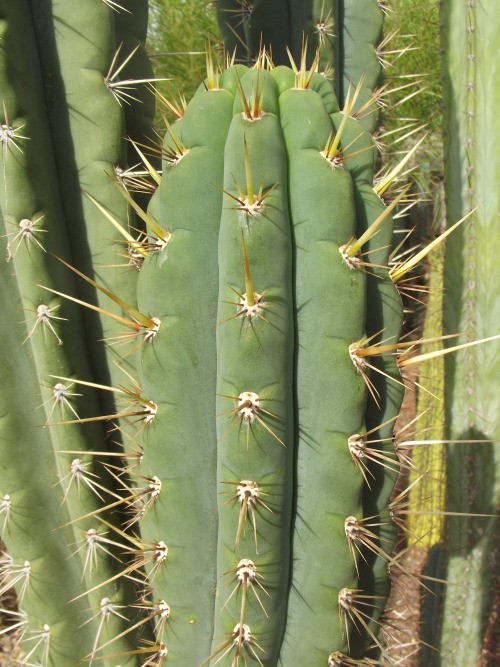
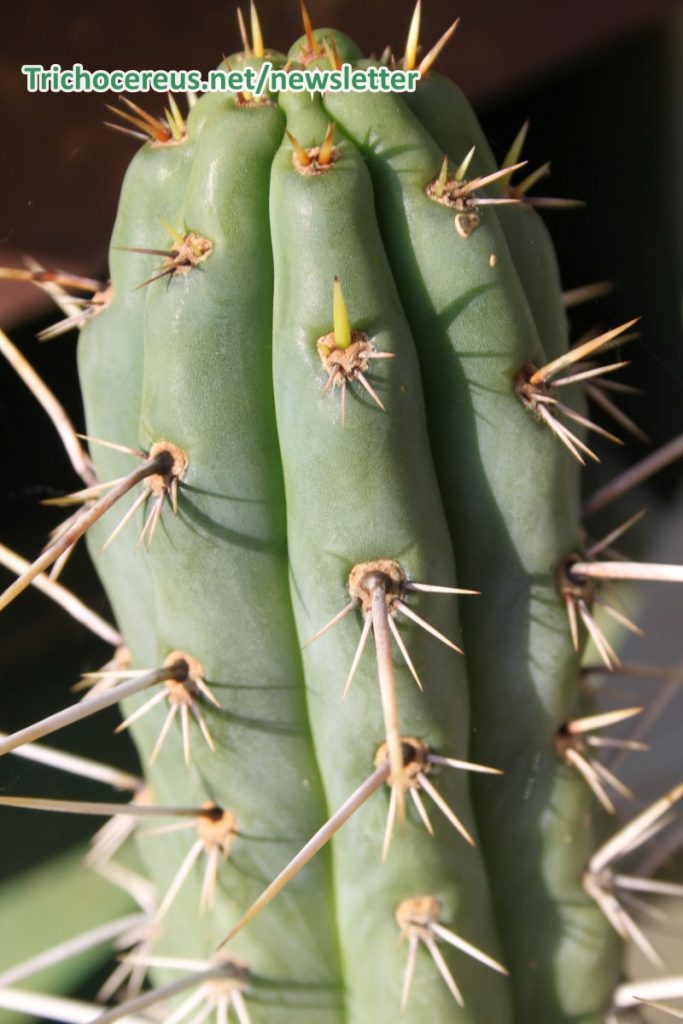
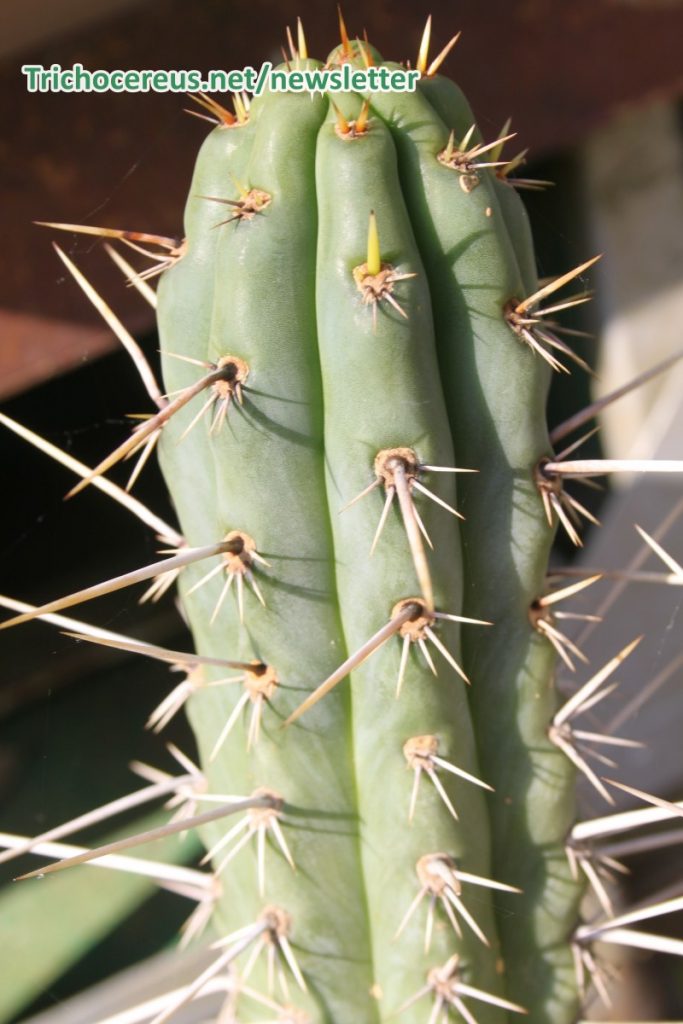
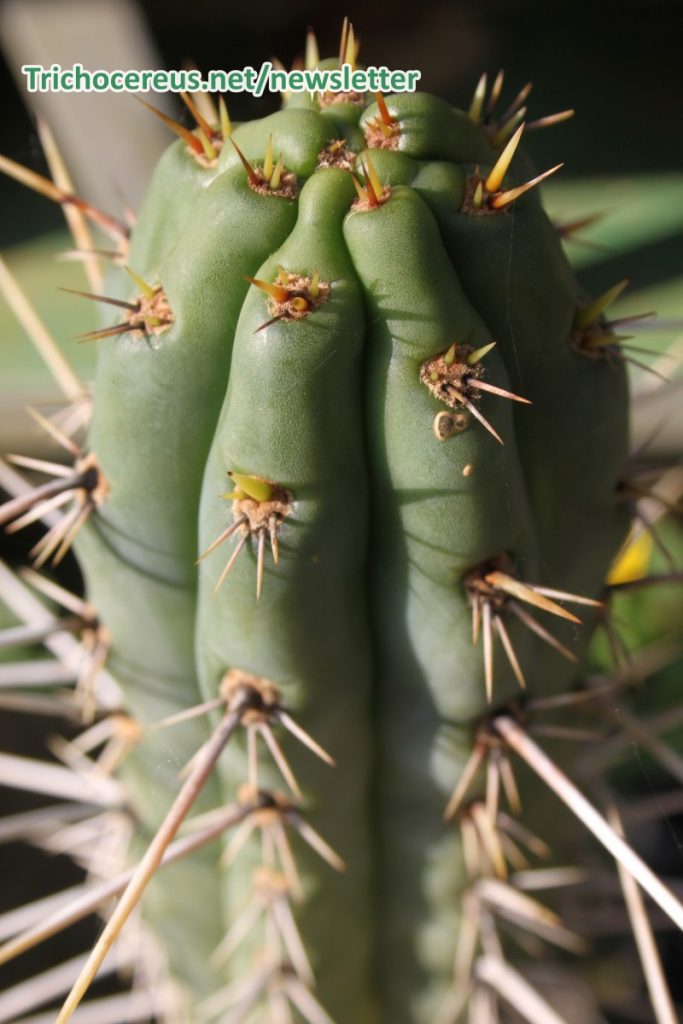

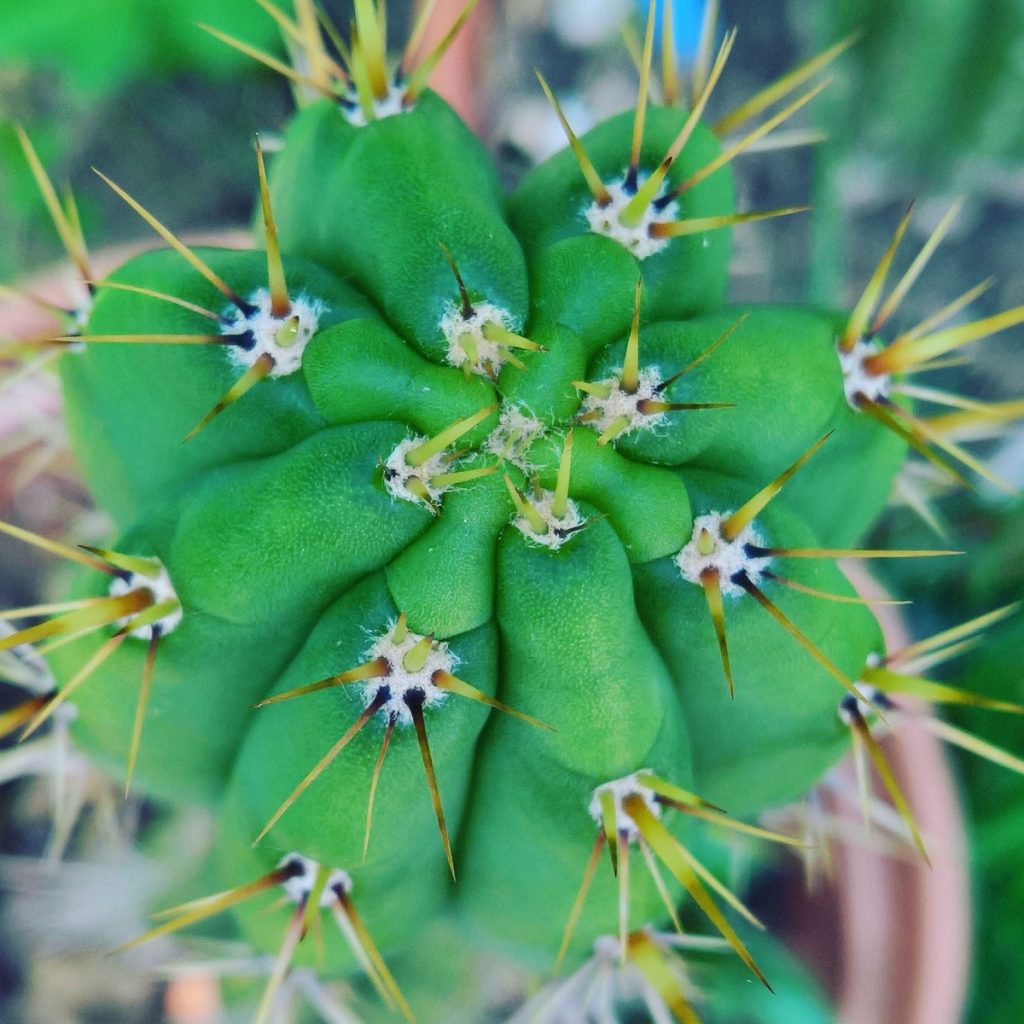
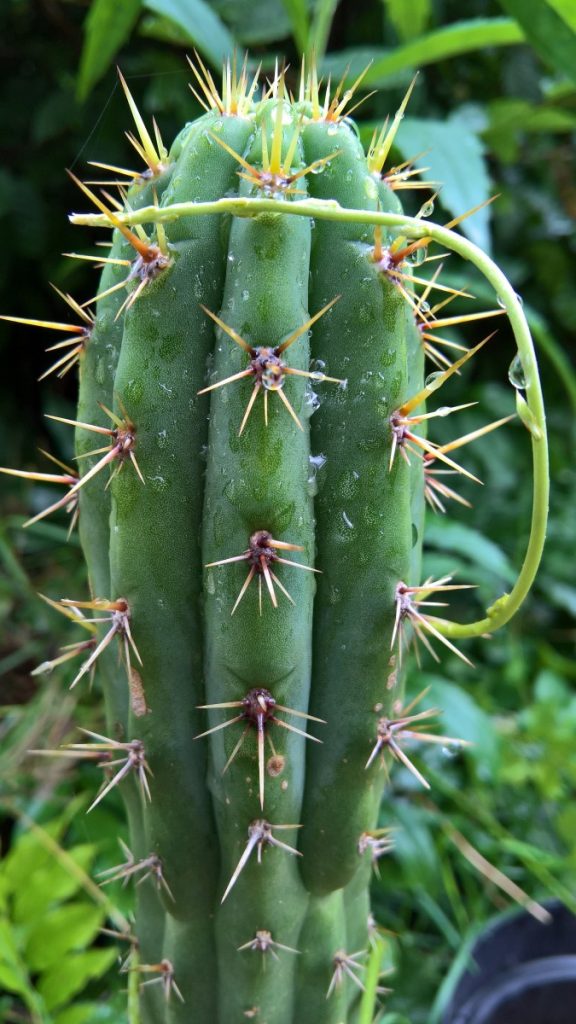
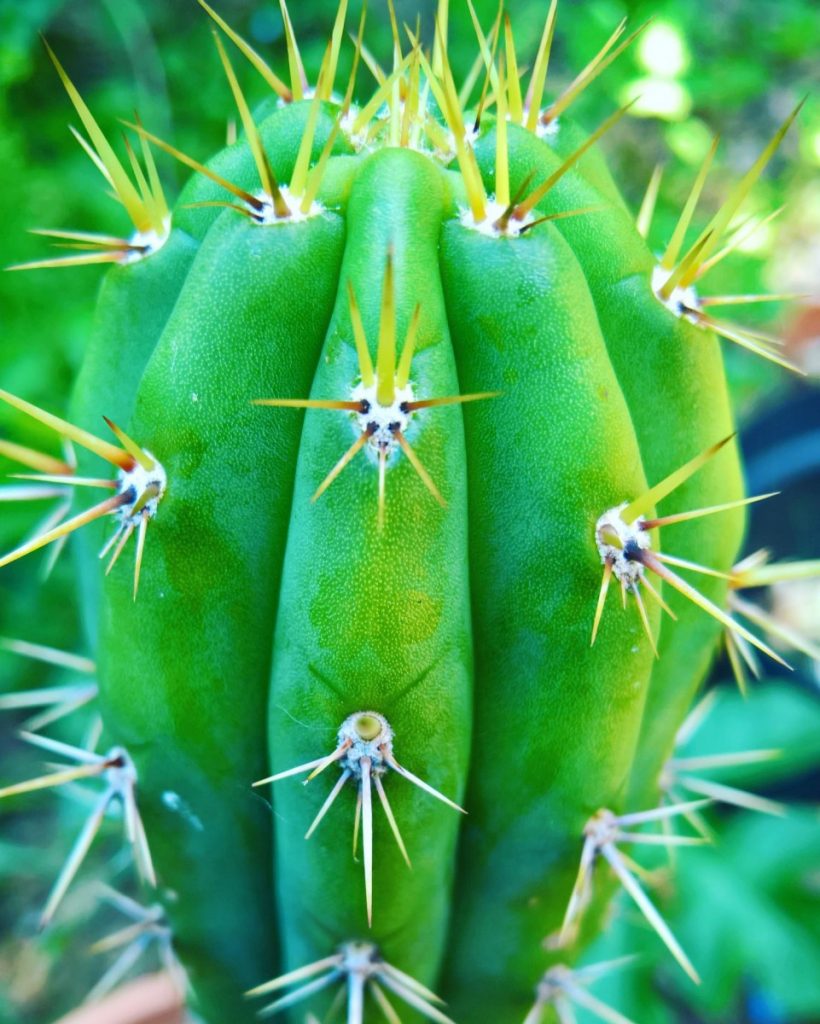
Videos of Trichocereus cuzcoensis / Echinopsis cuzcoensis
Check out our main plant database pages for Trichocereus pachanoi aka Echinopsis pachanoi here:
And Trichocereus bridgesii here:
Trichocereus scopulicola
Also check out our Trichocereus Facebook group here:

